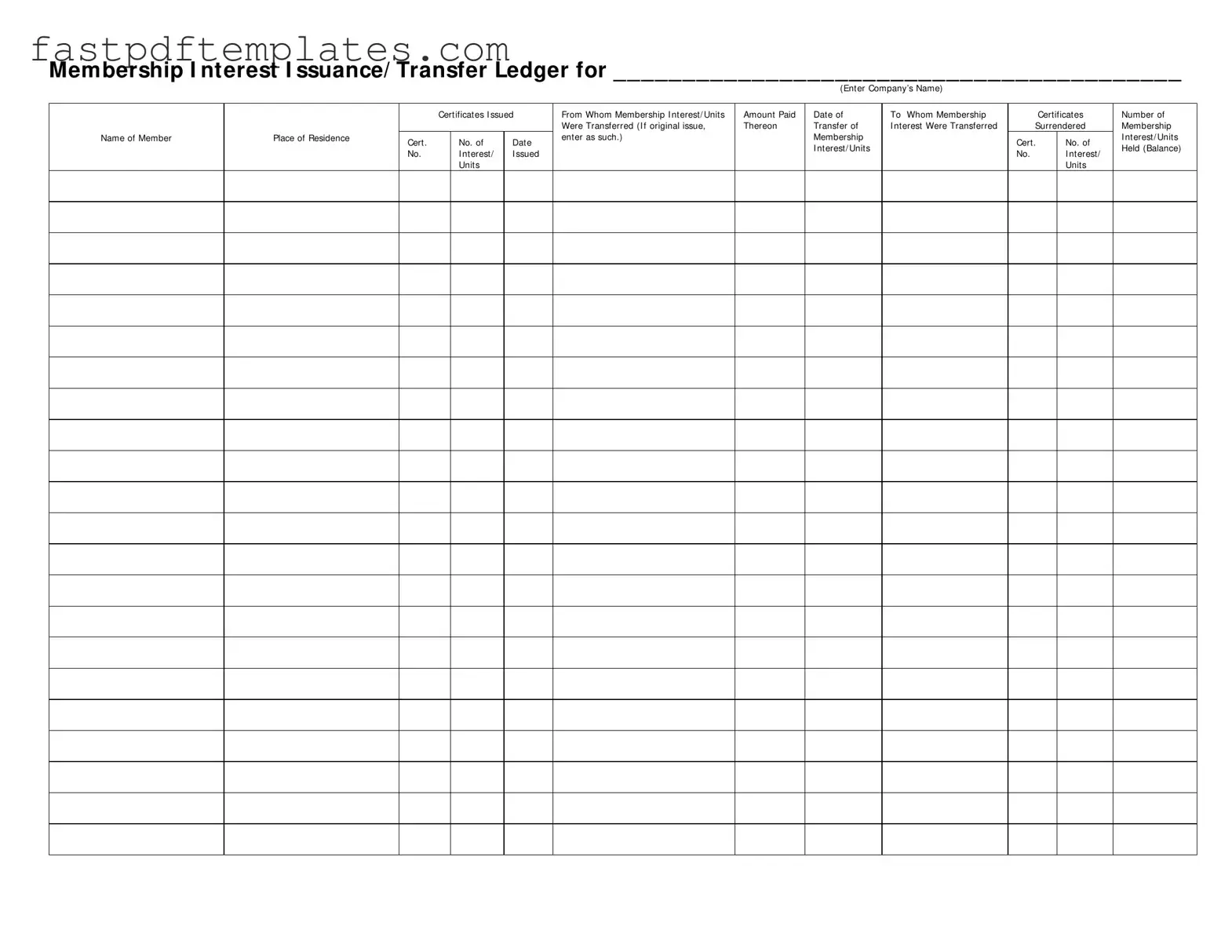Blank Membership Ledger Form
The Membership Ledger form is a crucial document used to track the issuance and transfer of membership interests or units within a company. This form captures essential details such as the names of members, the amount paid for interests, and the dates of transfers, ensuring accurate record-keeping. By maintaining a clear ledger, companies can effectively manage their membership interests and uphold transparency among stakeholders.
Access Document

